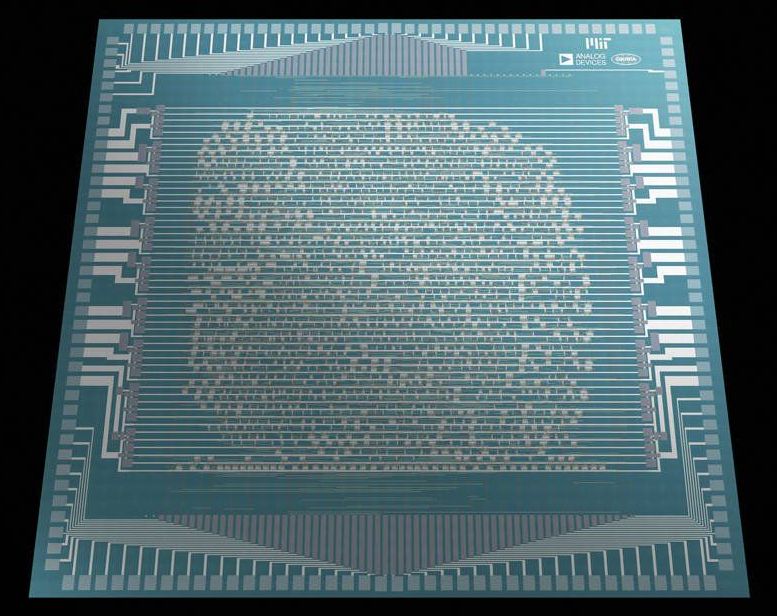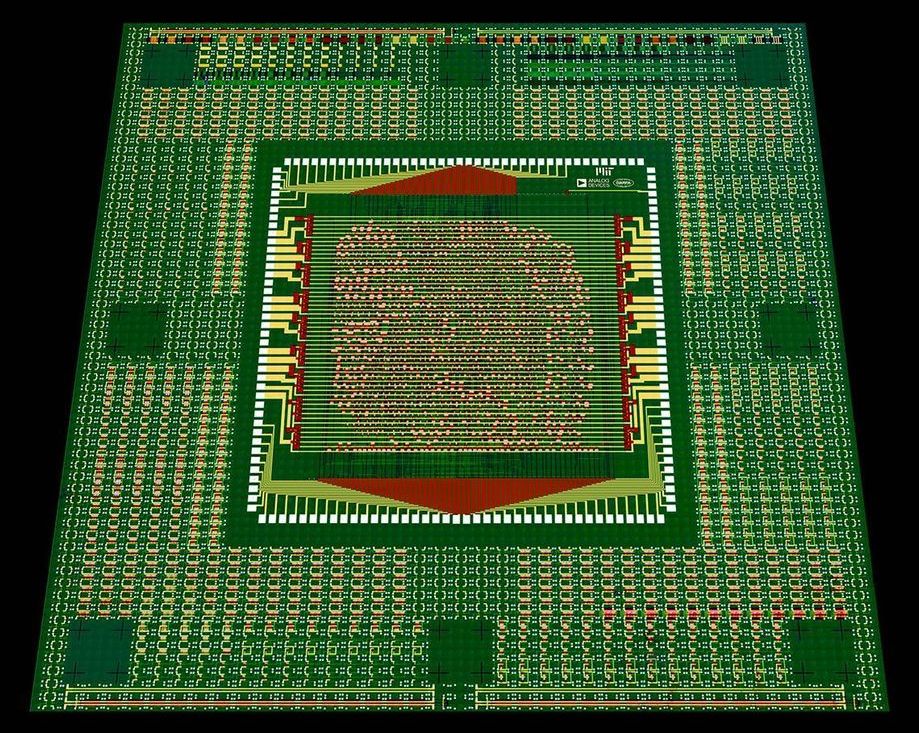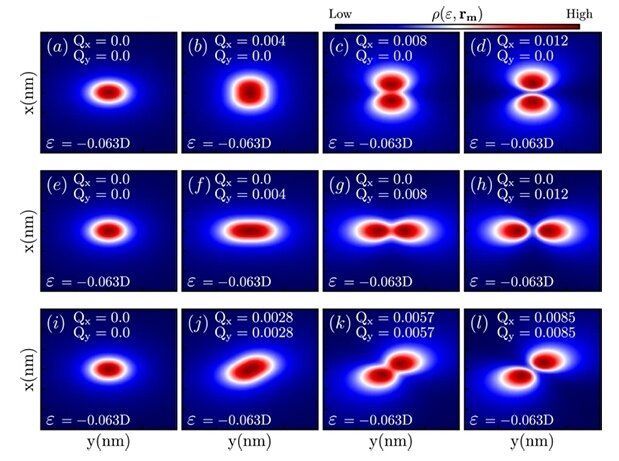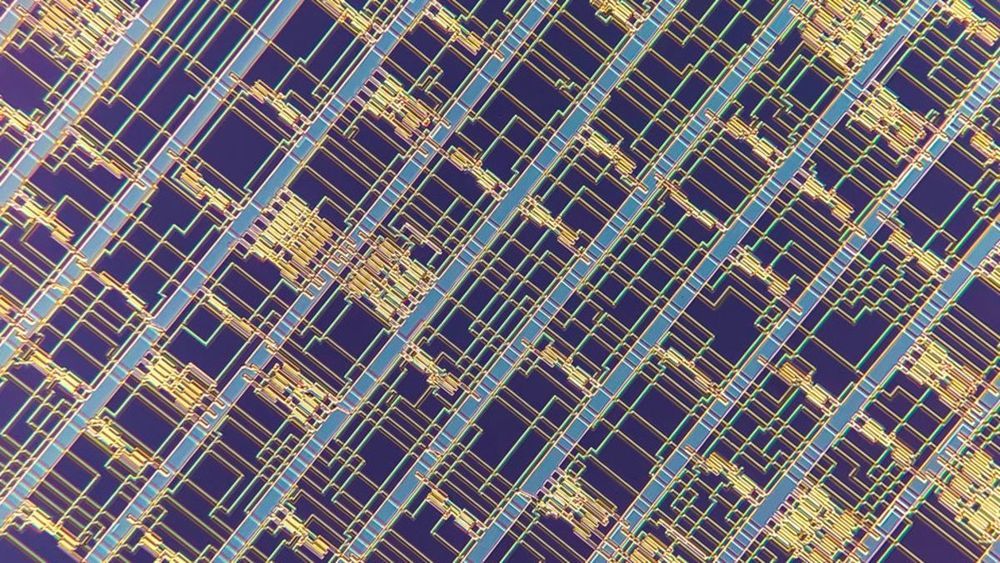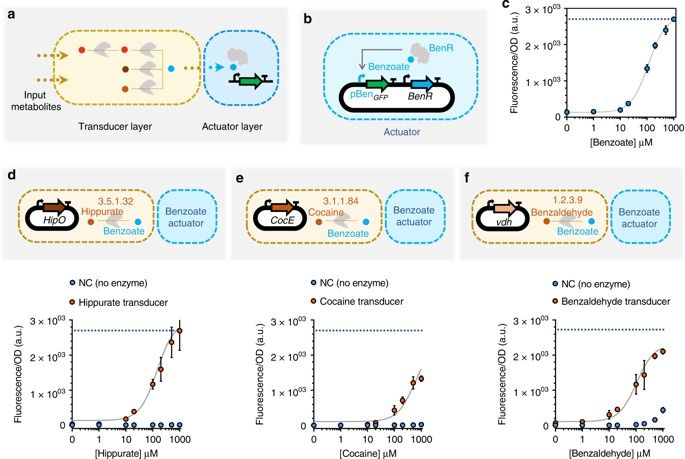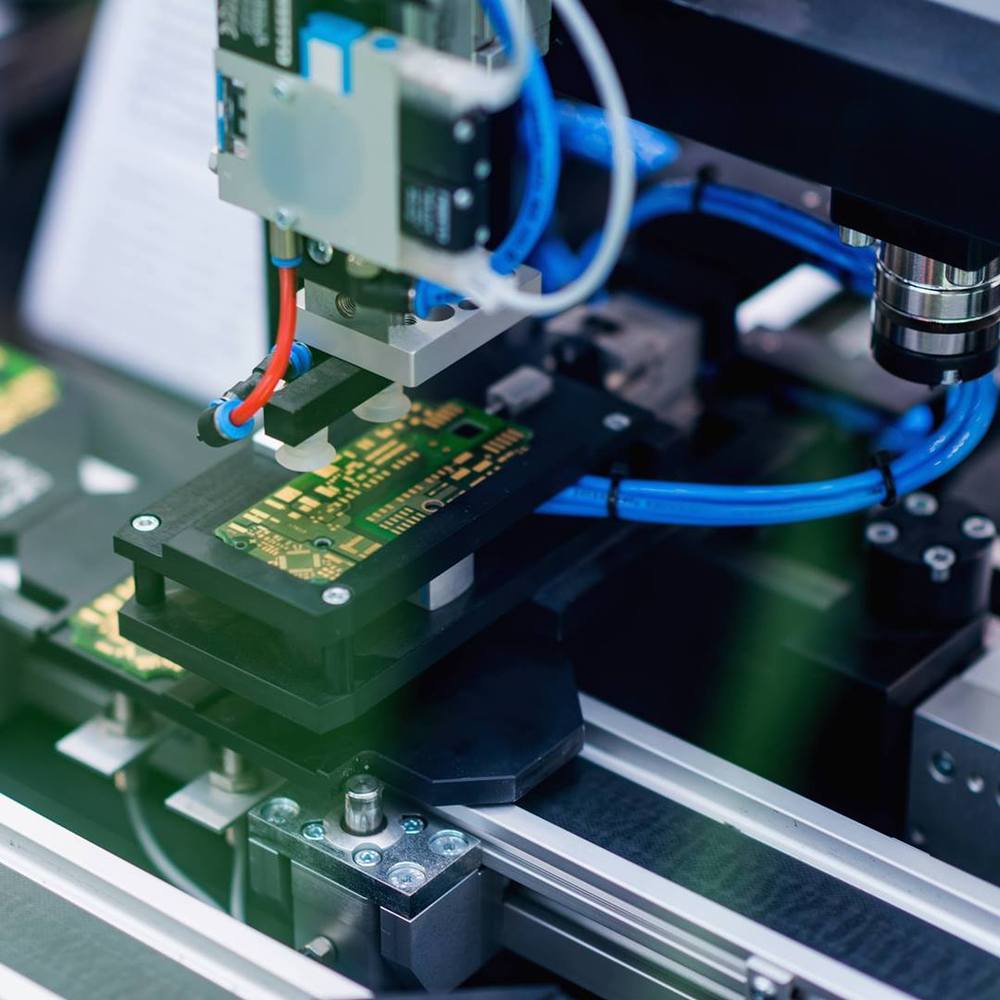Archive for the ‘computing’ category: Page 587
Aug 29, 2019
Engineers at MIT and Analog Devices have created the first fully-programmable 16-bit carbon nanotube microprocessor
Posted by Karen Hurst in categories: computing, nanotechnology
It’s the most complex integration of carbon nanotube-based CMOS logic so far, with nearly 15,000 transistors, and it was done using technologies that have already been proven to work in a commercial chip-manufacturing facility. The processor, called RV16X-NANO, is a milestone in the development of beyond-silicon technologies, its inventors say.
Unlike silicon transistors, nanotube devices can easily be made in multiple layers with dense 3D interconnections. The Defense Advanced Research Projects Agency is hoping this 3D aspect will lead to commercial carbon nanotube (CNT) chips with the performance of today’s cutting-edge silicon but without the high design and manufacturing cost.
Some of the same researchers created a modest one-bit, 178-transistor processor back in 2013. In contrast, the new one, which is based on the open source RISC-V instruction set, is capable of working with 16-bit data and 32-bit instructions. Naturally, the team, led by MIT assistant professor Max Shulaker, tested the chip by running a version of the obligatory “Hello, World!” program. They reported the achievement this week in Nature.
Aug 29, 2019
Break in temporal symmetry produces molecules that can encode information
Posted by Genevieve Klien in categories: computing, particle physics, quantum physics
In a study published in Scientific Reports, a group of researchers affiliated with São Paulo State University (UNESP) in Brazil describes an important theoretical finding that may contribute to the development of quantum computing and spintronics (spin electronics), an emerging technology that uses electron spin or angular momentum rather than electron charge to build faster, more efficient devices.
The study was supported by São Paulo Research Foundation—FAPESP. Its principal investigator was Antonio Carlos Seridonio, a professor in UNESP’s Department of Physics and Chemistry at Ilha Solteira, São Paulo State. His graduate students Yuri Marques, Willian Mizobata and Renan Oliveira also participated.
The researchers observed that molecules with the capacity to encode information are produced in systems called Weyl semimetals when time-reversal symmetry is broken.
Aug 28, 2019
MIT Researchers Build Functional Carbon Nanotube Microprocessor
Posted by Saúl Morales Rodriguéz in categories: computing, nanotechnology, particle physics
Scientists at MIT built a 16-bit microprocessor out of carbon nanotubes and even ran a program on it, a new paper reports.
Silicon-based computer processors seem to be approaching a limit to how small they can be scaled, so researchers are looking for other materials that might make for useful processors. It appears that transistors made from tubes of rolled-up, single-atom-thick sheets of carbon, called carbon nanotubes, could one day have more computational power while requiring less energy than silicon.
“This work is particularly exciting because carbon nanotubes are one of the most promising supplements in the future of beyond-silicon computers,” Max Shulaker, the study’s corresponding author and assistant professor at MIT, told Gizmodo.
Aug 28, 2019
Android 10 coming soon, with important privacy upgrades
Posted by Quinn Sena in categories: computing, mobile phones, security
It’s official: Android 10, the next version of the Android operating system, ships 3 September 2019. Well, it’s semi-official, at least.
Mobile site PhoneArena reports that Google’s customer support staff let the date slip to a reader during a text conversation. Expect the operating system, also known as Android Q, to hit Google’s Pixel phones first before rolling out to other models. It will include a range of privacy and security improvements that should keep Android users a little safer.
Aug 28, 2019
Metabolic perceptrons for neural computing in biological systems
Posted by Karen Hurst in categories: biotech/medical, computing, neuroscience
Synthetic biological circuits are promising tools for developing sophisticated systems for medical, industrial, and environmental applications. So far, circuit implementations commonly rely on gene expression regulation for information processing using digital logic. Here, we present a different approach for biological computation through metabolic circuits designed by computer-aided tools, implemented in both whole-cell and cell-free systems. We first combine metabolic transducers to build an analog adder, a device that sums up the concentrations of multiple input metabolites. Next, we build a weighted adder where the contributions of the different metabolites to the sum can be adjusted. Using a computational model fitted on experimental data, we finally implement two four-input perceptrons for desired binary classification of metabolite combinations by applying model-predicted weights to the metabolic perceptron. The perceptron-mediated neural computing introduced here lays the groundwork for more advanced metabolic circuits for rapid and scalable multiplex sensing.
Aug 27, 2019
Newly Built Computer Mimics The Human Brain
Posted by Paul Battista in categories: computing, neuroscience
Aug 25, 2019
Researchers Demonstrate The World’s First Quantum Radar
Posted by Quinn Sena in categories: computing, encryption, quantum physics

Yes, we know that sometimes it feels like they just tack the word quantum on new technology and call it a day like we are all living in the Marvel Cinematic Universe. Nevertheless, quantum technology is very real and is just as exciting. Our better understanding of the quantum world and handle on the principals will help us improve everything from computing to encryption.
Aug 24, 2019
Researchers advance organ-on-chip technology to advance drug development
Posted by Saúl Morales Rodriguéz in categories: biotech/medical, computing, engineering
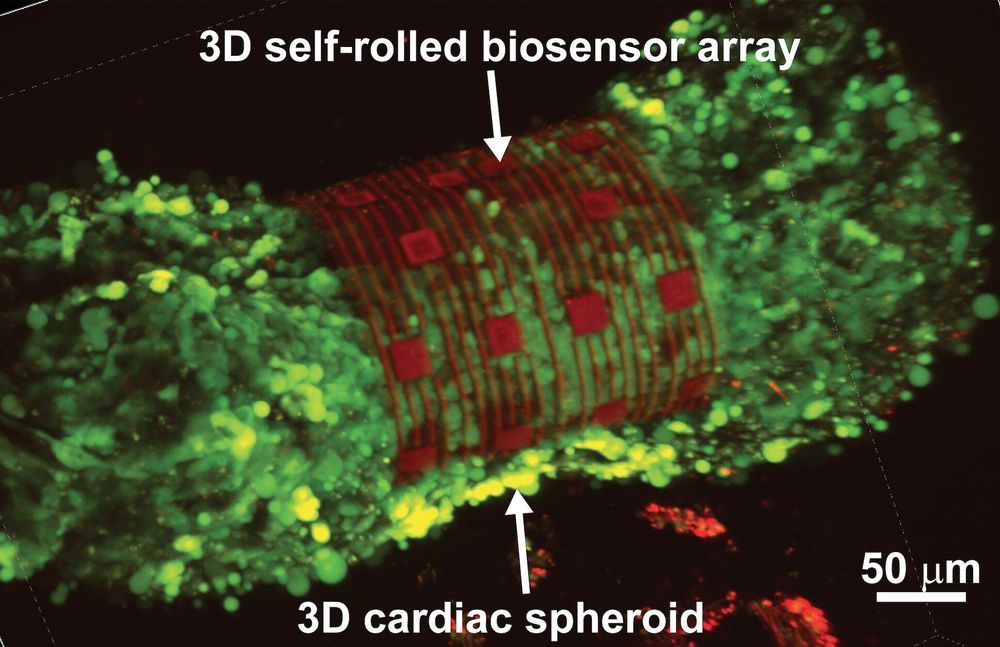
Researchers from Carnegie Mellon University (CMU) and Nanyang Technological University, Singapore (NTU Singapore) have developed an organ-on-an-electronic-chip platform, which uses bioelectrical sensors to measure the electrophysiology of the heart cells in three dimensions. These 3D, self-rolling biosensor arrays coil up over heart cell spheroid tissues to form an “organ-on-e-chip,” thus enabling the researchers to study how cells communicate with each other in multicellular systems such as the heart.
The organ-on-e-chip approach will help develop and assess the efficacy of drugs for disease treatment—perhaps even enabling researchers to screen for drugs and toxins directly on a human-like tissue, rather than testing on animal tissue. The platform will also be used to shed light on the connection between the heart’s electrical signals and disease, such as arrhythmias. The research, published in Science Advances, allows the researchers to investigate processes in cultured cells that currently are not accessible, such as tissue development and cell maturation.
Continue reading “Researchers advance organ-on-chip technology to advance drug development” »
Aug 23, 2019
Quantum radar has been demonstrated for the first time
Posted by Shane Hinshaw in categories: computing, encryption, quantum physics
One of the advantages of the quantum revolution is the ability to sense the world in a new way. The general idea is to use the special properties of quantum mechanics to make measurements or produce images that are otherwise impossible.
Much of this work is done with photons. But as far as the electromagnetic spectrum is concerned, the quantum revolution has been a little one-sided. Almost all the advances in quantum computing, cryptography, teleportation, and so on have involved visible or near-visible light.
